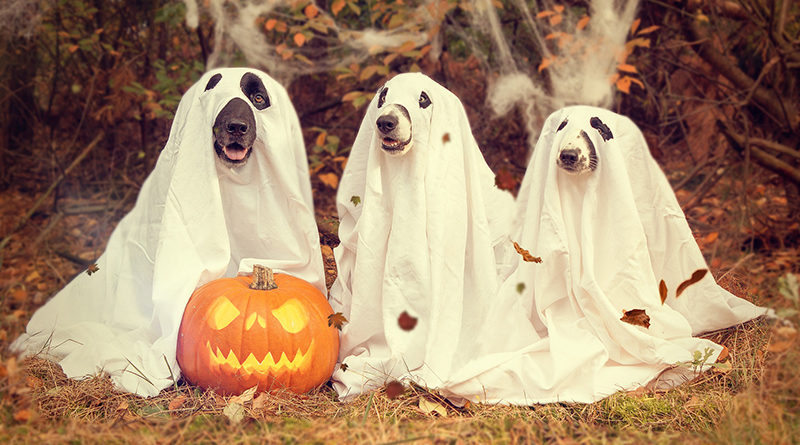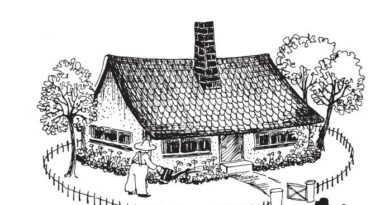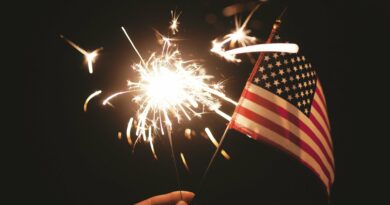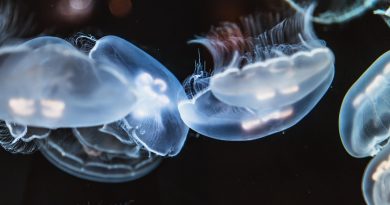Halloween quiz
Bald sieht man sie wieder überall: flackernde Kürbislaternen, falsche Vampirzähne und auf Halloween getrimmte Süßwaren. Doch was hat es mit diesem gruseligsten aller Feiertage eigentlich auf sich? Finden Sie es heraus in unserem Halloween-Quiz!
By Franziska Lange
It’s the spooky season! Children dressed up in costumes are roaming the streets in the hope of getting their bags filled to the brim with sweets, scary films are booming and the flickering lights of thousands of Jack O’Lanterns are casting eerie shadows on ghostly decorations… In between pumpkin carving and fancy dress parties, take our quiz to find out more about the origins of Halloween!
1. An easy question to start with: Trick or …?
a) trap
b) thrill
c) treat
d) treacle
2. And what is/are the origin/s of this custom of collecting sweets?
a) During the festival of Samhain, the Celts put out food in order to appease the spirits of the dead who were believed to roam the streets in the night before November 1.
b) It is a relatively recent custom which immigrants brought to the US at the beginning of the 20th century and which was subsequently taken up by more and more people.
c) In the Middle Ages, the poor went from door to door on Hallowmas (November 1) and offered prayers for the dead in exchange for drink and food.
d) In the 19th century, ghost stories gained popularity. To divert people from scary thoughts on All Hallows’ Eve, the idea of dressing up so as to frighten ghosts and going from door to door to collect sweets emerged.
3. What is commonly believed to be the birthplace of Halloween?
a) Scotland
b) Ireland
c) the US
d) Wales
4. Legend has it that a stingy man called Jack was forbidden from entering either heaven or hell and was therefore condemned to wander the earth, with only a lantern to guide him. What were the first Jack O’Lanterns made from, in line with Jack’s story?
a) Turnips
b) Pumpkins, of course
c) People simply used candles behind a screen
d) Squash
5. As early as 2,000 years ago, the Celts already celebrated summer’s end on October 31, which was the last day of the year according to their calendar. How did they celebrate?
a) They put out small tokens to placate the spirits of the dead and invited one another to gatherings with music and singing.
b) They danced around a huge bonfire, chasing away demons with their laughter.
c) They did not celebrate at all, instead preparing for the cold season to come.
d) They thanked their god Samhain for their harvest and lit fires to guide the souls of the deceased that were believed to return to the earth for one night.
6. Contrary to popular Halloween imagery, a full moon on October 31 is very rare, the last occurrences being in 2001 and 1955. When will be the next time you might see a witch riding her broom with a full moon in the background on All Hallows’ Eve?
a) 2018
b) 2020
c) 2031
d) 2047

7. Ghosts, witches and spiders – Halloween is also the high season for superstitions. Which of these are true according to popular belief?
a) Black cats are witches’ familiars, protecting their owners.
b) If you see a spider on Halloween, it could be the spirit of a dead loved one watching over you.
c) In medieval times, owls were seen as incarnations of witches, and hearing an owl’s call meant someone was about to die.
d) Bats are associated with bad luck.
8. What has never been used as another term for Halloween?
a) All Saints’ Eve
b) Pumpkin Evening Revels
c) Cabbage Night
d) Witches’ Night
9. Halloween and romance – an odd pairing?
a) Of course, there’s no place for romance on this spooky holiday!
b) Not necessarily – according to official statistics, marriage proposals in the US spike on October 31.
c) No, Halloween has a rich tradition of romantic rituals: Bobbing for apples began as a courtship ritual and at midnight, single women can supposedly see their future romantic partner in a mirror.
d) No, the Celts already had a reputation as prolific matchmakers.
10. Which Halloween treat was originally advertised as chicken feed?
a) candy corn
b) Dracula fangs
c) pumpkin bars
d) circus peanuts
11. What do the traditional Halloween colours stand for?
a) purple for witches and black for their familiars, i.e. cats and bats
b) going back to Celtic traditions of celebrating summer’s end, orange stands for the sun and black is associated with the Celtic winter god
c) there is no deeper meaning – it’s all just an invention of the confectionery industry
d) orange for endurance, strength and harvest and black for darkness and death

12. What is the medical term for a fear of Halloween?
a) adytumophobia
b) sanctovespertinophobia
c) samhainophobia
d) Who would be afraid of Halloween?
13. Which statement is false?
a) Several states in the US have banned teenagers over the age of 12 from trick-or-treating.
b) With sales of up to $8 bn, Halloween is the most commercial American holiday of the year.
c) Hollywood has imposed a ban on silly string that is in place from October 31 until November 1.
d) The Village Halloween Parade in New York City is the biggest of its kind in the US.
____________________________________________________________
Answer key
1. c) • 2. a) + c) • 3. b) • 4. a) • 5. d) • 6. b) • 7. all answers are correct • 8. b) • 9. c) • 10. a) • 11. d) • 12. c) • 13. b)
| Photos: Pixabay






